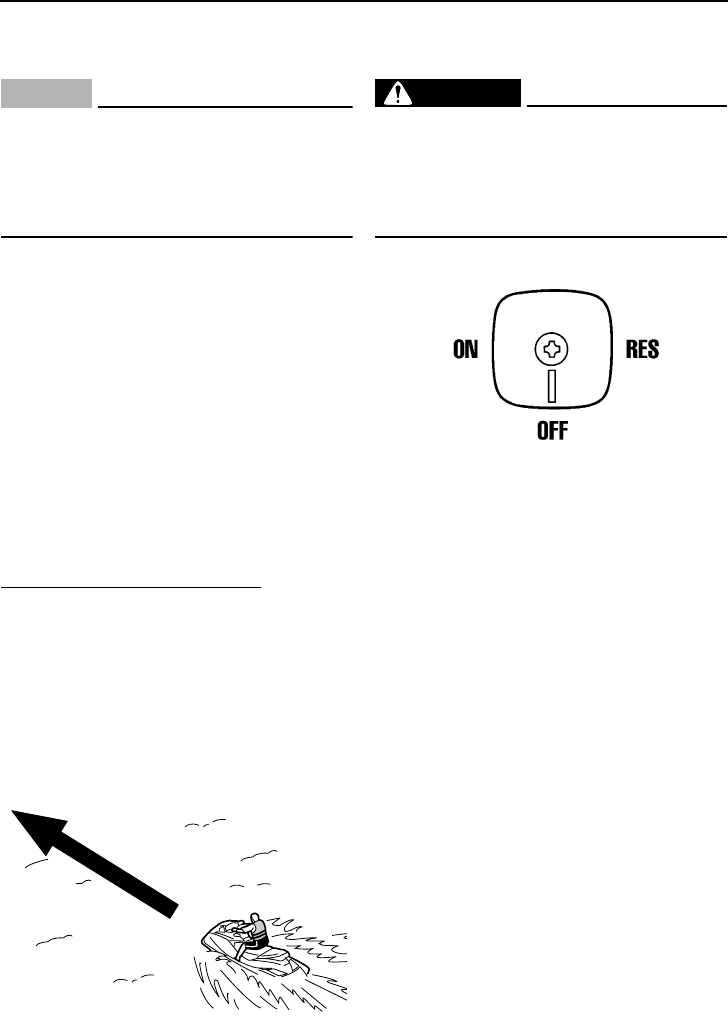
Operation and handling requirements
33
EJU40021
Draining the bilge water
NOTICE
ECJ01301
Do not run the engine at full throttle when
bilge water remains in the engine compart-
ment. The bilge water can splash into the
engine, which can result in severe dam-
age.
EJU40920
Draining the bilge water on water
A small quantity of bilge water will remain in
the engine compartment even after the bilge
water is drained on water. To completely re-
move the bilge water, remove the watercraft
from the water and wipe up any remaining
moisture in the engine compartment with a
dry cloth.
Jet vacuum bilge draining system
While the watercraft is operating, a vacuum is
generated in the jet pump that draws in the
bilge water from the engine compartment and
discharges it from the jet thrust nozzle.
To drain the bilge water on water:
Operate the watercraft as straight as possible
and above planing speed for at least 2 min-
utes. NOTICE: Do not run the engine at full
throttle for at least 1 minute after the en-
gine has been restarted. Bilge water in the
engine compartment can splash into the
engine, which can result in severe dam-
age.
[ECJ00553]
EJU33423
Transporting
WARNING
EWJ00750
Always turn the fuel cock knob to “OFF”
when transporting the watercraft, other-
wise fuel could leak out into the engine or
engine compartment, which would create
a fire hazard.
When transporting the watercraft on a trailer,
secure the bow rope hole and stern of the wa-
tercraft to the trailer with ropes or tie downs.
Use a rubber shock cord to secure the steer-
ing pole to the watercraft. NOTICE: Do not
secure the steering pole with ropes or tie
downs and do not secure it to the trailer.
Also, do not transport the watercraft with
the steering pole up. Otherwise, the steer-
ing pole could be damaged. Wrap the
ropes or tie downs with towels or rags
UF2F12E0.book Page 33 Tuesday, July 14, 2009 3:07 PM


















